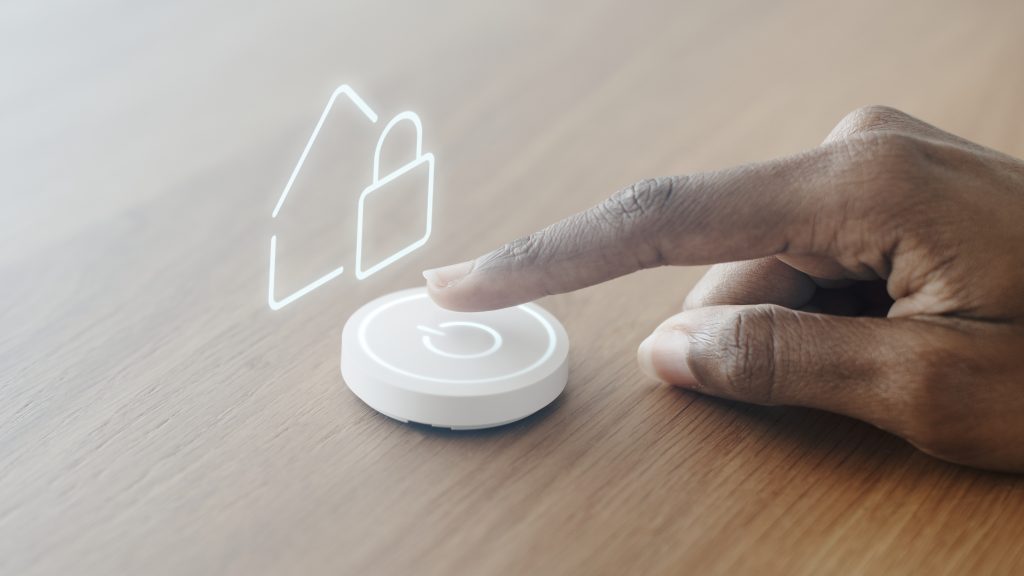Smart Home Innovations for Safety and Comfort
Aiden Foster August 18, 2025
The concept of the smart home has been around for decades, but we are now entering a new phase—AI ambient sensing homes. Unlike early smart devices that required direct commands or app controls, ambient sensing technology adapts automatically to your presence, habits, and environment. Imagine arriving home after a stressful day, and your house instantly dims the lights, adjusts the temperature, and plays calming music without you lifting a finger.
This isn’t science fiction. Ambient sensing is rapidly becoming one of the most talked-about innovations in home technology, especially as people demand greater comfort, safety, and wellness from their living spaces. In this article, we’ll explore what AI ambient sensing homes are, how they’re shaping the future of domestic life, their benefits and challenges, and what homeowners can expect next.

1. What Is Ambient Sensing in Smart Homes?
Ambient sensing refers to the use of discreet sensors, machine learning, and context-aware algorithms to make homes more responsive and adaptive. Unlike traditional smart devices that depend on direct interaction, ambient systems work quietly in the background.
Key features of ambient sensing:
- Invisible integration: Sensors are embedded in appliances, walls, and devices rather than standing out as separate gadgets.
- Context awareness: Systems detect presence, mood, and environmental conditions, and respond automatically.
- Learning ability: AI analyzes patterns over time to better anticipate resident needs.
- Proactive action: Adjustments happen before you even realize you need them.
For example, instead of telling a smart speaker to lower the thermostat, your home already knows your preference when you arrive from work and makes the adjustment automatically.
2. Why Are AI Ambient Sensing Homes Emerging Now?
Several social and technological factors are fueling this shift:
Demand for seamless technology
People want homes that feel natural, not filled with clunky gadgets. Ambient sensing achieves this by blending into the environment.
Advances in AI and edge computing
The ability to process data locally means homes can respond faster and keep sensitive information more secure.
Growing focus on wellness and safety
Consumers expect their living environments to promote health and peace of mind, not just convenience.
Maturity of the smart home market
Smart thermostats, speakers, and cameras paved the way. The next logical step is integrating these devices into intelligent, proactive systems.
3. How AI Ambient Sensing Homes Improve Comfort
Comfort goes beyond temperature control. Ambient sensing creates an environment that adapts holistically to lifestyle, mood, and health.
Adaptive lighting
Lighting that adjusts based on circadian rhythms can help regulate sleep patterns, reduce eye strain, and create more soothing environments.
Air quality and humidity control
Sensors detect pollutants or dry air and automatically activate purifiers or humidifiers to maintain healthier indoor conditions.
Personalized ambiance
By recognizing behavior patterns, ambient systems adjust lighting, sound, and even scents to match routines, such as energizing mornings or calming evenings.
Predictive temperature control
Instead of reactive systems, AI can anticipate when you are heading home and prepare the space in advance, ensuring comfort the moment you walk in.
4. Safety and Security Enhancements
Safety is one of the most critical areas where AI ambient sensing homes show promise.
Context-aware security
AI can distinguish between a family member arriving late at night and a potential intruder. This reduces false alarms and improves accuracy.
Smarter notifications
Instead of overwhelming homeowners with constant alerts, systems only notify when there’s a meaningful event that requires attention.
Proactive hazard detection
Sensors can identify unusual changes such as smoke, gas leaks, or water damage earlier than traditional systems.
Fall detection for the elderly
For aging residents, ambient sensing can track unusual movements, detect falls, and notify caregivers immediately.
5. Energy Efficiency and Eco-Smart Living
An AI ambient sensing home doesn’t just focus on people—it also optimizes energy use.
- Occupancy-based HVAC control ensures heating and cooling only where it’s needed.
- Coordinated systems align blinds, lighting, and climate to reduce waste.
- Predictive energy management uses historical data to balance comfort with lower energy bills.
This makes ambient sensing homes not only more comfortable but also more environmentally responsible.
6. Real-World Applications of AI Ambient Sensing Homes
This technology is no longer just a concept—it’s already being implemented.
Integrated home hubs
Modern hubs use appliances like TVs and refrigerators as hidden sensors, turning them into multi-purpose devices for motion and light detection.
AI-driven security
Next-generation cameras and sensors use AI to differentiate between people, pets, and objects, creating fewer false alarms.
Smart ambiance systems
Systems can sync lighting, sound, and air quality with daily activities—energizing mornings, focused work hours, or restful sleep.
Health and wellness integration
Ambient sensing homes can support better sleep cycles, monitor indoor air for allergens, and even provide gentle reminders for hydration and medication.
7. Benefits of AI Ambient Sensing Homes
To summarize, the benefits are both practical and transformative:
- Effortless living: Comfort without constant manual adjustments.
- Improved security: Smarter, faster, and more accurate detection.
- Wellness by design: Lighting and air systems that actively promote health.
- Aging-friendly environments: Homes that support independence for seniors.
- Lower energy costs: Efficiency built into daily routines.
8. Challenges and Ethical Considerations
No innovation comes without hurdles. For AI ambient sensing homes, the challenges include:
Privacy concerns
The constant monitoring required to anticipate needs can raise valid concerns about surveillance. Local data processing and strong encryption will be key solutions.
Interoperability issues
Many smart devices operate in closed ecosystems. Until standardization improves, seamless integration remains a challenge.
Accessibility and cost
Currently, ambient sensing systems are more expensive than conventional smart devices. Wider adoption will depend on affordability.
Trust in AI decision-making
Homeowners may be hesitant to let systems make decisions without explicit approval. Building transparency into how decisions are made will help adoption.
9. The Future of AI Ambient Sensing Homes
Looking ahead, ambient sensing is poised to become a cornerstone of modern living.
Health-centric homes
Expect integration with wearable health devices, enabling homes to adapt based on stress levels, heart rate, or sleep quality.
Secure ecosystems
Future systems may use blockchain or advanced encryption to ensure user data stays safe.
Community-based sensing
Smart neighborhoods could use ambient data to improve collective safety, energy efficiency, and urban planning.
Ethical frameworks
Governments and organizations are already developing guidelines to ensure responsible use of ambient AI in everyday life.
10. Practical Steps for Homeowners Considering Ambient Sensing
For readers interested in preparing their homes for this emerging trend, here are practical steps:
- Start with a smart hub that allows for multi-device integration.
- Prioritize privacy by selecting systems that offer local data storage.
- Invest in adaptive lighting as one of the easiest entry points.
- Explore AI-enhanced security that minimizes false alarms.
- Choose scalable solutions so you can expand as technology evolves.
These small steps make it easier to transition into a fully ambient sensing home over time.
Conclusion
The age of AI ambient sensing homes is arriving faster than many anticipated. This innovation is more than just futuristic convenience—it represents a meaningful shift in how we live, blending comfort, safety, wellness, and energy efficiency into one seamless experience.
From homes that help elderly residents live independently to spaces that optimize health and reduce stress, ambient sensing has real benefits for people at every stage of life. While challenges like privacy and affordability remain, the momentum is clear: the smart home of tomorrow won’t just listen—it will anticipate, adapt, and quietly support better living every day.
For homeowners, designers, and technology enthusiasts, this is a trend worth watching. The next decade will likely see ambient sensing transform from a luxury into a standard feature of modern housing.
References
- The Spruce. (2025). Home technology trends for 2025. Available at: https://www.thespruce.com (Accessed: 18 August 2025).
- The Verge. (2025, January 22). Samsung’s SmartThings platform is turning TVs and appliances into ambient sensors. Available at: https://www.theverge.com (Accessed: 18 August 2025).
- Homes & Gardens. (2025). How AI anticipates and adapts smart home technology. Available at: https://www.homesandgardens.com (Accessed: 18 August 2025).






